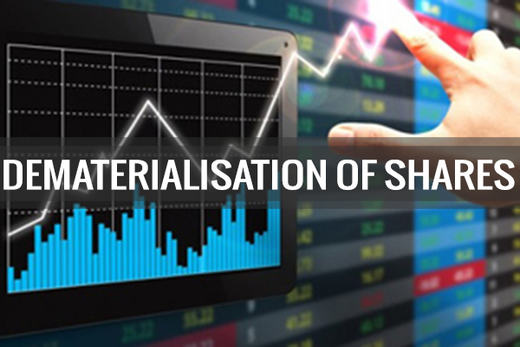Understanding Dematerialisation: The Core Process Behind Your Demat Account

The Demat account, which was introduced in 1996 by SEBI or Securities and the Exchange Board of India has truly led to the revolutionising of the Indian stock market.
The sole purpose of introducing the Demat account was to eliminate the need to use physical certificates to carry out trades in the market.
It also sought to eliminate physical trading as a whole, which meant that investors and traders no longer had to visit stock exchanges to buy and sell securities.
The online Demat account paved the way for the online trading model of buying and selling securities online and acts as an umbrella under which traders can hold all their investments virtually.
The question of the shares that investors bought before 1996 still stands, and this is where the dematerialisation process comes into the picture. Here is everything you need to know about it.
Understanding a Demat Account
Before we take a deep dive into the intricacies of the dematerialisation process, let us take a look at the workings of a Demat account.
-
The very first step towards dematerialisation starts with opening an online Demat account.
-
The word ‘Demat’ itself is short for dematerialisation, which, in short, is a process through which physical securities are converted into electronic format.
-
As a result, the Demat account enables a trader to buy and sell, hold and transfer securities without all the physical paperwork or back and forth, involved
-
With the Demat account, trading has also become safer and more efficient, eliminating the risk of theft or loss that usually accompanies physical securities.
-
Think of the Demat as a bank account for your securities. It helps a trader hold equity, bonds, and mutual funds with ease.
The Process of Dematerialisation
The process of dematerialisation is quite simple, though it may take some time. It essentially has four steps.
Step 1: Opening a Demat Account:
One cannot dematerialise their securities without having a Demat account to store them digitally in.
Step 2: Using a DRF to Submit a Request to your DP
The next step involves filing a Dematerialisation Request Form or DRF that needs to be submitted to your DP to further the dematerialisation process.
Step 3: Verification of DRF and physical certificates by DP
Post the submission of the DRF, all the details in it will be verified by your DP including the physical certificates of the securities you had submitted
Step 4: Post Approval Process
When the DP approves the DRF and the physical certificates, the physical certificates are destroyed and electronically credited to your Demat account.
Features of Dematerialisation
Here is a look at the main features of the dematerialisation process:
-
The dematerialisation process provides several features to investors to help them trade effectively and make informed investment decisions.
-
The main motive of dematerialisation is to convert physical shares to electronic holdings in the Demat account, to help investors trade with them easily on the stock market
-
Dematerialisation provides safety to investors in carrying out transactions as they are cross-checked by depository institutions.
Benefits
Investors enjoy many benefits when they decide to dematerialise their securities.
-
Safety: With the help of dematerialization, the chances of chances of shares being lost, forged or misplaced get eliminated.
-
Convenience: Since securities are now stored in electronic format, the need to physically store or maintain them also ceases to exist. No more worrying about your share certificates being lost or damaged.
-
Accessibility: Since all your securities are now stored electronically, you can gain access to them from anywhere at any time using the internet.
-
Cost-efficiency: Trading electronically drastically reduces the cost involved since there is no physical trading and the brokers’ fees are reduced as well.
-
Flexibility: With dematerialisation came more flexibility and improved access for small investors. Investors can now buy or sell even single shares with no restrictions
Conclusion
The process of dematerialization is a crucial step in helping secure your investments and providing you with a better trading experience. Trading can now be done online through stockbroking websites and mobile applications with ease.

